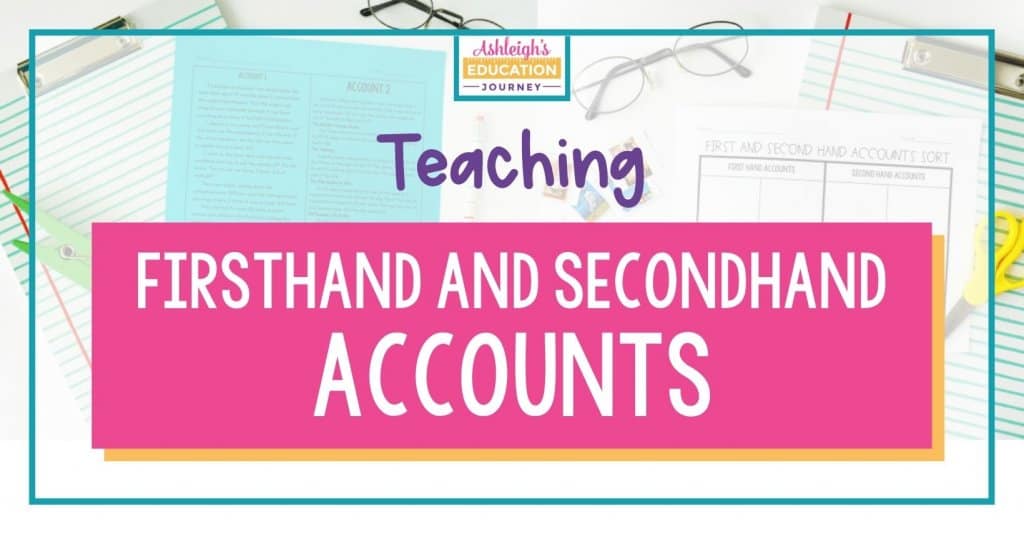
When I moved back to teaching fourth grade and read the standard “Compare and contrast a firsthand and secondhand account of the same event or topic; describe the differences in focus and the information provided” I was more than a little confused. Once I I spent time unpacking the standard and actually understanding what the standard meant, I still didn’t have a clear direction on how to teach firsthand and secondhand accounts. It took several years to develop a series of lessons that were age appropriate and meaningful for my students. In this post, I’ll share some of my favorite lessons for teaching firsthand and secondhand accounts. You can find all of the printables on my TpT shop.
Firsthand and Secondhand Accounts – Lesson 1
I first explain that a firsthand account is a description of an event TOLD by someone who saw or experienced the event. Then, I let students share examples of firsthand accounts such as: autobiography, diary, email, journal, interview, letter, or photograph. After explaining firsthand accounts, I then explain that a second hand account is a description of an event based on research. I have students think of examples of a second hand account such as: biography textbook, encyclopedia, and newspaper article. During this time, I create an anchor chart of these terms and examples.
In the first lesson, I model how to complete the firsthand and secondhand accounts graphic organizer. Depending on the class discussion and performance from my students, we may complete it together as a class, complete it independently, or have some students complete it independently while I work with others on the graphic organizer in a small group.
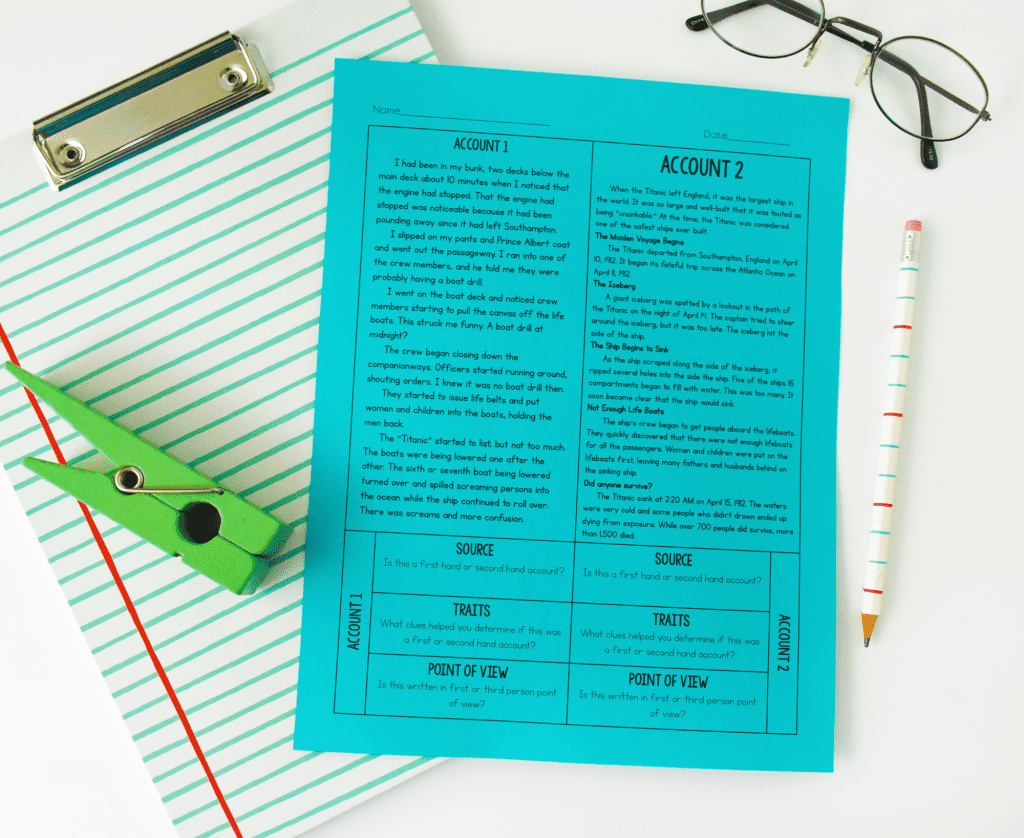
Firsthand and Secondhand Accounts – Lesson 2
The book Through My Eyes is a great mentor text for teaching firsthand and secondhand accounts. There are many accounts written in the sidebars by people other than Ruby Bridges. There are also excerpts taken from 1960s publications including Good Housekeeping, The New York Times, and U.S. News and World Report.
As I read the book, I ask students to analyze the various accounts and determine whether each is a firsthand or a secondhand account. For example, after reading an excerpt from The New York Times, we discuss whether it is a firsthand or secondhand account, or if we have enough information to determine if the author of the article was at the event.
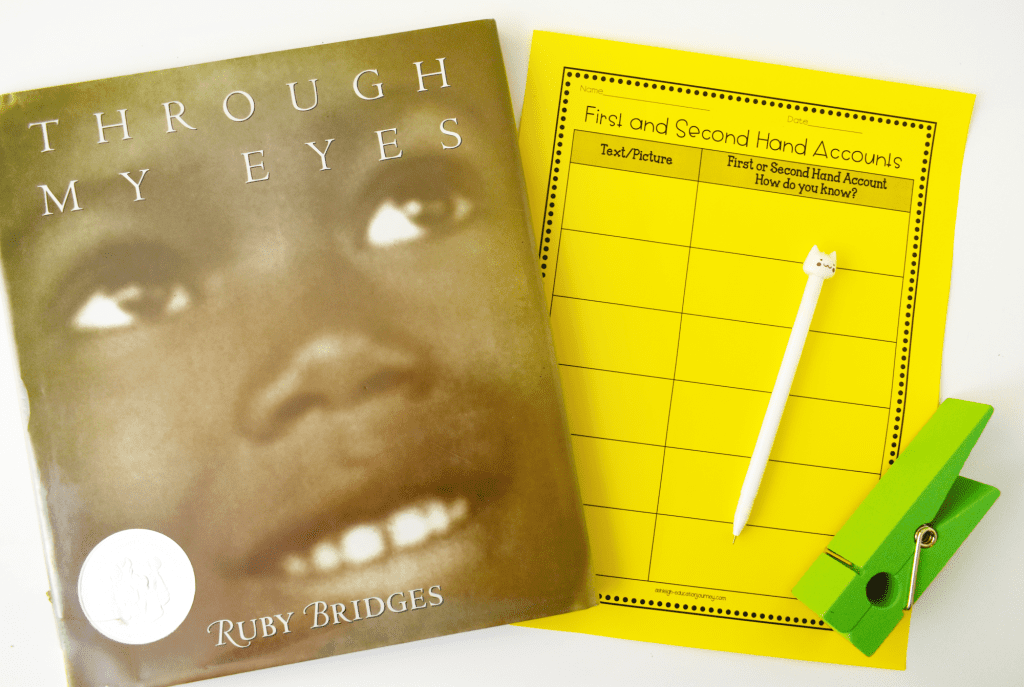
Firsthand and Secondhand Accounts – Lesson 3
Before each lesson, I give students an opportunity to review the characteristics of a first hand account and a second hand account. This lesson does not incorporate a mentor text. Instead, students complete a sort for additional practice identifying the differences between the two accounts. The sort includes key words as well as book covers that are fairly obvious on whether the book is a firsthand or secondhand account.
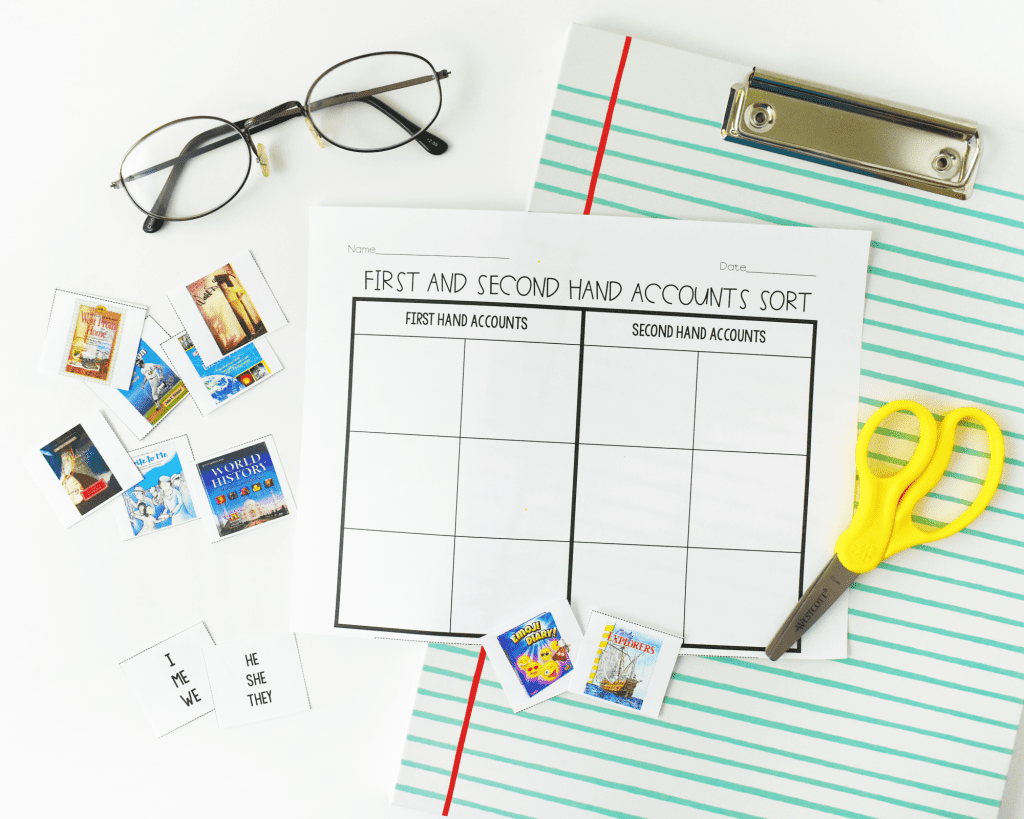
Firsthand and Secondhand Accounts – Lesson 4 & 5
In the final two lessons, students show what they know about firsthand and secondhand accounts by WRITING examples of both types of accounts. In order to give students more time to write, there is not a mentor text for this lesson. During the mini lesson, I explain the expectations for the task and model how to use the firsthand account and secondhand account checklist at the bottom of the page. I typically have students write a firsthand account on one day and a secondhand account of the same event the following day.
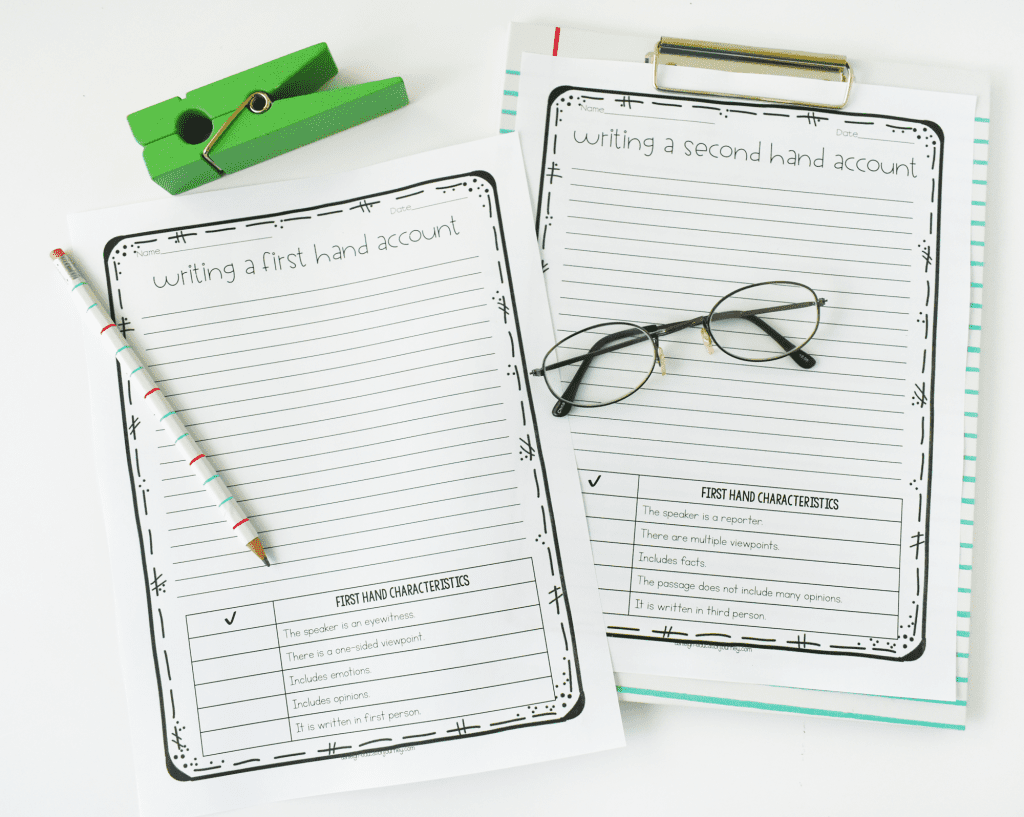
If you’re looking for an academic hallway display, you can have students attach both pages to a large sheet of construction paper and display these outside your classroom. You can also easily tie this in to what you’re teaching in social studies or science. Since my students recently learned about the Boston Massacre, I have my students focus their writing on that event.
I hope that you’ve found some useful ideas! You can find all of the printables here. If you need more teaching ideas for challenging reading standards, be sure to stay tuned, because I’m working on a lot more! In fact, I just posted an article on teaching references to Greek mythology here.



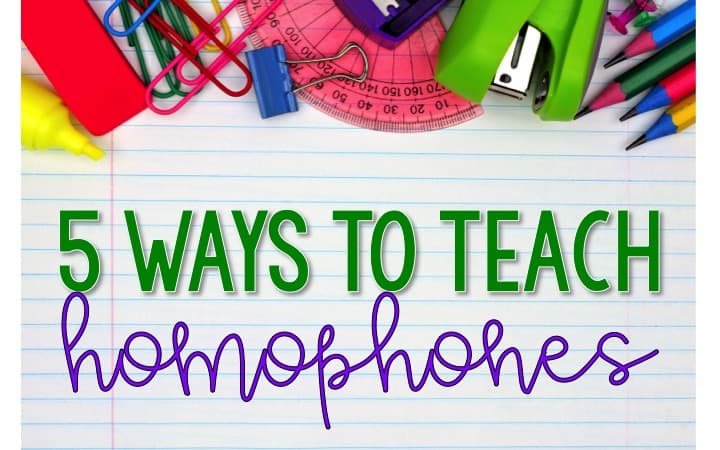
Will you offer this part of the unit on its own?
It’s great!